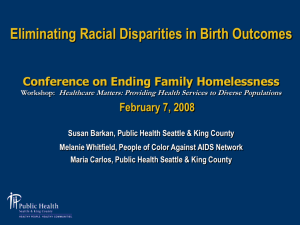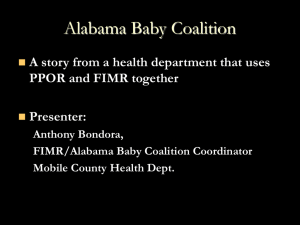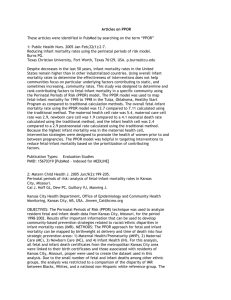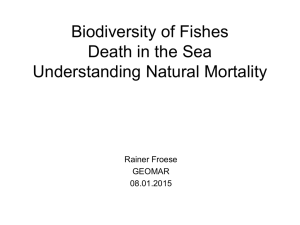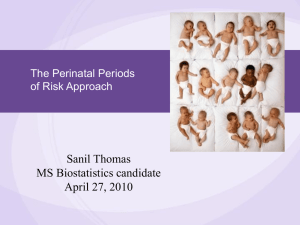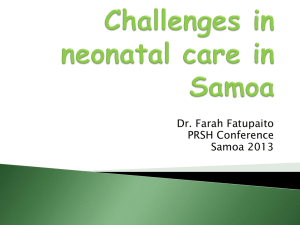Brief overview of PPOR
advertisement
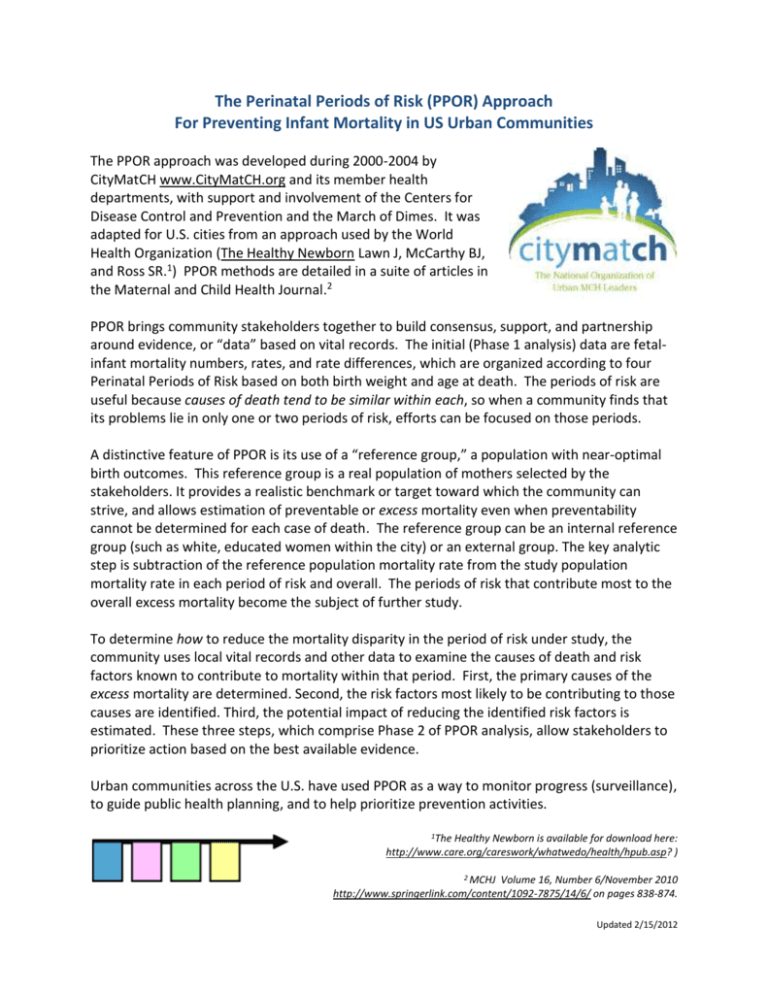
The Perinatal Periods of Risk (PPOR) Approach For Preventing Infant Mortality in US Urban Communities The PPOR approach was developed during 2000-2004 by CityMatCH www.CityMatCH.org and its member health departments, with support and involvement of the Centers for Disease Control and Prevention and the March of Dimes. It was adapted for U.S. cities from an approach used by the World Health Organization (The Healthy Newborn Lawn J, McCarthy BJ, and Ross SR.1) PPOR methods are detailed in a suite of articles in the Maternal and Child Health Journal.2 PPOR brings community stakeholders together to build consensus, support, and partnership around evidence, or “data” based on vital records. The initial (Phase 1 analysis) data are fetalinfant mortality numbers, rates, and rate differences, which are organized according to four Perinatal Periods of Risk based on both birth weight and age at death. The periods of risk are useful because causes of death tend to be similar within each, so when a community finds that its problems lie in only one or two periods of risk, efforts can be focused on those periods. A distinctive feature of PPOR is its use of a “reference group,” a population with near-optimal birth outcomes. This reference group is a real population of mothers selected by the stakeholders. It provides a realistic benchmark or target toward which the community can strive, and allows estimation of preventable or excess mortality even when preventability cannot be determined for each case of death. The reference group can be an internal reference group (such as white, educated women within the city) or an external group. The key analytic step is subtraction of the reference population mortality rate from the study population mortality rate in each period of risk and overall. The periods of risk that contribute most to the overall excess mortality become the subject of further study. To determine how to reduce the mortality disparity in the period of risk under study, the community uses local vital records and other data to examine the causes of death and risk factors known to contribute to mortality within that period. First, the primary causes of the excess mortality are determined. Second, the risk factors most likely to be contributing to those causes are identified. Third, the potential impact of reducing the identified risk factors is estimated. These three steps, which comprise Phase 2 of PPOR analysis, allow stakeholders to prioritize action based on the best available evidence. Urban communities across the U.S. have used PPOR as a way to monitor progress (surveillance), to guide public health planning, and to help prioritize prevention activities. 1The Healthy Newborn is available for download here: http://www.care.org/careswork/whatwedo/health/hpub.asp? ) 2 MCHJ Volume 16, Number 6/November 2010 http://www.springerlink.com/content/1092-7875/14/6/ on pages 838-874. Updated 2/15/2012
